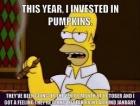The subject of Stop Losses provokes heated discussion here on Stockopedia. Opinions are divided on how, why, when, where and if you should set a pre-defined exit price on a trade. Some investors won’t use stop losses, but others can’t live without them.
One of the biggest questions about stop losses is why they should even be used in the first place. Those in favour point to the benefits of lower volatility in a portfolio and protection from sudden single-stock disasters. For that reason, they’re often promoted by traders like Robbie Burns and Mark Minervini.
But the counter argument is that a regular buy-and-hold strategy (without stops) will even itself out over time. Without a stop, you won’t be at risk of being shaken out of a position. You won’t be left wondering what to do if you’re stopped out. You won’t be hit by extra trading costs. And you won’t be at risk of missing a recovery.
The arguments on both sides are persuasive. So in the coming weeks, we’re going to be looking a little closer at stop losses and exploring some of the science and behaviour behind them.
To start, I’m going to look at research into whether stop loss strategies are superior to buying-and-holding. Spoiler alert: Don’t expect all the answers. I discovered that even one of the leading authorities on the subject believes that there are always trade-offs between the two!
Why there are two sides to stop losses
To begin with, it’s worth thinking about the nature of stop losses and how they’re used. Arguably, many see them as just a risk management tool for cutting losses if prices tumble. That’s perfectly reasonable but there’s a problem here. The decision to sell often isn’t balanced by a pre-planned strategy for buying back in again. Ignoring this second part means not having a plan for staying invested in equities as much as possible.
The question of when to sell and when to buy back was the focus of a study by Joachim Klement, who’s currently head of thematic research at the investment bank Credit Suisse. In 2013 he endeavoured to figure out when stop losses worked best using global market data spanning 1970 to 2013. He started with the following set of possible tactics:
1. Fast out / fast in (three months / three months): In other words, sell the asset if the…













